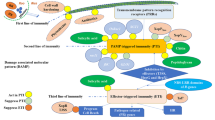Abstract
Two new fungicides, flutianil and pyriofenone were introduced into the Japanese market in 2013 and 2014, to control powdery mildew on cucumber. Isolates of Podosphaera xanthii, the causal agent of powdery mildew, were collected in Ibaraki Prefecture, Japan, between 2017 and 2019 from cucumber greenhouses with a history of flutianil and pyriofenone usage. They were then tested for sensitivity to both fungicides by the leaf disc test. First, the sensitivity of three baseline reference isolates to each fungicide was determined. Minimum inhibitory concentrations values were 0.0063 μg/ml for flutianil and 10 μg/ml for pyriofenone, while 50% effective concentration (EC50) values of these fungicides were 0.00013–0.00035 μg/ml and 0.39–0.70 μg/ml, respectively. To determine the current sensitivity of P. xanthii in detail, 23 single-spore isolates were then sampled from five greenhouses and tested. Nineteen isolates showed high resistance (Flu-HR/Pyr-HR) with EC50 values of >100 μg/ml for flutianil and > 1000 μg/ml for pyriofenone. The low sensitivity of Flu-HR/Pyr-HR isolates was stable even after 46 subcultures on fungicide-untreated cotyledons. Additionally, two isolates showed moderate resistance (Flu-MR/Pyr-MR) to flutianil (EC50: mean 0.8 μg/ml) and pyriofenone (mean 58.7 μg/ml). The results from foliar inoculation tests on potted cucumber plants confirmed low efficacies of flutianil and pyriofenone against resistant isolates. Among a total of 122 isolates sampled from 13 greenhouses, 89 isolates (73.0%) were categorized as Flu-HR/Pyr-HR and two isolates (1.6%) as Flu-MR/Pyr-MR. This is the first report on flutianil resistance in any pathogen.



Similar content being viewed by others
References
Felsenstein, F., Semar, M., & Stammler, G. (2010). Sensitivity of wheat powdery mildew (Blumeria graminis f. sp. tritici) towards metrafenone. Gesunde Pflanzen, 62(1), 29–33.
Fungicide Resistance Action Committee (2019) FRAC Code List© 2019: Fungal control agents sorted by cross resistance pattern and mode of action (including FRAC Code numbering). http://www.frac.info/docs/default-source/publications/frac-code-list/frac-code-list-2019.pdf?sfvrsn=98ff4b9a_2. Accessed 3 October 2019.
Graf, S. (2017) Characterisation of metrafenone and succinate dehydrogenase inhibitor resistant isolates of grapevine powdery mildew Erysiphe necator. PhD Dissertation, Technische Universität Kaiserslautern, Kaiserslautern, German.
Hosokawa, H., Yamanaka, H., Haramoto, M., Sano, S., Yokota, C., & Hamamura, H. (2006). Occurrence and biological properties of cyflufenamid-resistant Sphaerotheca cucurbitae (abstract in Japanese). Japanese Journal of Phytopathology, 72(4), 260–261.
Ishii, H., Fraaije, B. A., Sugiyama, T., Noguchi, K., Nishimura, K., Takeda, T., et al. (2001). Occurrence and molecular characterization of strobilurin resistance in cucumber powdery mildew and downy mildew. Phytopathology, 91(12), 1166–1171.
Ishii, H., Miyamoto, T., Ushio, S., & Kakishima, M. (2011). Lack of cross-resistance to a novel succinate dehydrogenase inhibitor, fluopyram, in highly boscalid-resistant isolates of Corynespora cassiicola and Podosphaera xanthii. Pest Management Science, 67(4), 474–482.
Kanda, Y. (2013). Investigation of the freely available easy-to-use software ‘EZR’ for medical statistics. Bone Marrow Transplantation, 48, 452–458.
Kunova, A., Pizzatti, C., Bonaldi, M., & Cortesi, P. (2016). Metrafenone resistance in a population of Erysiphe necator in northern Italy. Pest Management Science, 72(2), 398–404.
Miyamoto, T., Ishii, H., & Tomita, Y. (2010). Occurrence of boscalid resistance in cucumber powdery mildew in Japan and molecular characterization of the iron-sulfur protein of succinate dehydrogenase of the causal fungus. Journal of General Plant Pathology, 76(4), 261–267.
Ohara, T., & Tsutsumi, K. (2015). Sensitivity testing method of cucumber powdery mildew caused by Podosphaera xanthii for penthiopyrad (in Japanese). Monthly Plant Protection Journal, 69(9), 563–568.
Ohtsuka, N., Sou, K., Amano, T., Ojima, M., Nakazawa, Y., & Yamada, Y. (1988). Decreased sensitivity of cucumber powdery mildew (Sphaerotheca fuliginea) to ergosterol biosynthesis inhibitors. Annuals of the Phytopathological Society of Japan, 54(5), 629–632.
Opalski, K. S., Tresch, S., Kogel, K. H., Grossmann, K., Köhle, H., & Hückelhoven, R. (2006). Metrafenone: Studies on the mode of action of a novel cereal powdery mildew fungicide. Pest Management Science, 62(5), 393–401.
Russell, P. E. (2004) Sensitivity baselines in fungicide resistance research and management. Brussels, Belgium: Crop life international: FRAC monograph 3. http://www.frac.info/docs/default-source/publications/monographs/monograph-3.pdf?sfvrsn=629d419a_8. Accessed 3 October 2019.
Sato, Y., Hoshi, H., Kagiwada, S., Nishio, T., & Horie, H. (2013). First record of Golovinomyces orontii on cucumber in Japan (abstract in Japanese). Japanese Journal of Phytopathology, 79(3), 187.
Schmitt, M. R., Carzaniga, R., Cotter, H. V. T., O’Connell, R., & Hollomon, D. (2006). Microscopy reveals disease control through novel effects on fungal development: A case study with an early-generation benzophenone fungicide. Pest Management Science, 62(5), 383–392.
Stammler, G., Semar, M., & Strobel, D. (2014) Resistance management of metrafenone in powdery mildews. In Dehne, H. W., Deising, H. B., Fraaije, B., Gisi, U., Hermann, D., Mehl, A., et al. (Ed) Modern fungicides and antifungal compounds VII. Proceedings of the 17th international Reinhardsbrunn symposium, April 21–25, 2013, Friedrichroda, Germany (pp 179–184). Braunschweig: Deutsche Phytomedizinische Gesellschaft e.V. Verlag.
Uchida, K., Takamatsu, S., Matsuda, K., So, K., & Sato, Y. (2009). Morphological and molecular characterization of Oidium subgenus Reticuloidium (powdery mildew) newly occurred on cucumber in Japan. Journal of General Plant Pathology, 75(2), 92–100.
Acknowledgements
We express our thanks to Dr. H. Ishii (Kibi International University) for his valuable comments on and his critical review of this study, and Dr. S. Takamatsu (Mie University) for the identification of powdery mildew pathogen. We also thank K. So, N. Ishihama, K. Maeda, R. Mori and Y. Ando (ZEN-NOH) for providing P. xanthii isolate K-7-2 and software for this work, M. Kuzuya (Ibaraki Plant Biotechnology Institute) for providing isolates N1 and N2, and Dr. D. Wari (Ibaraki Horticultural Research Institute) for carefully proofreading this manuscript.
Author information
Authors and Affiliations
Corresponding author
Ethics declarations
Conflict of interest
The authors declare that they have no conflicts of interest.
Human and animal rights statement
This article does not describe any studies with human participants or animals performed by any of the authors.
Rights and permissions
About this article
Cite this article
Miyamoto, T., Hayashi, K. & Ogawara, T. First report of the occurrence of multiple resistance to Flutianil and Pyriofenone in field isolates of Podosphaera xanthii, the causal fungus of cucumber powdery mildew. Eur J Plant Pathol 156, 953–963 (2020). https://doi.org/10.1007/s10658-020-01946-6
Accepted:
Published:
Issue Date:
DOI: https://doi.org/10.1007/s10658-020-01946-6




